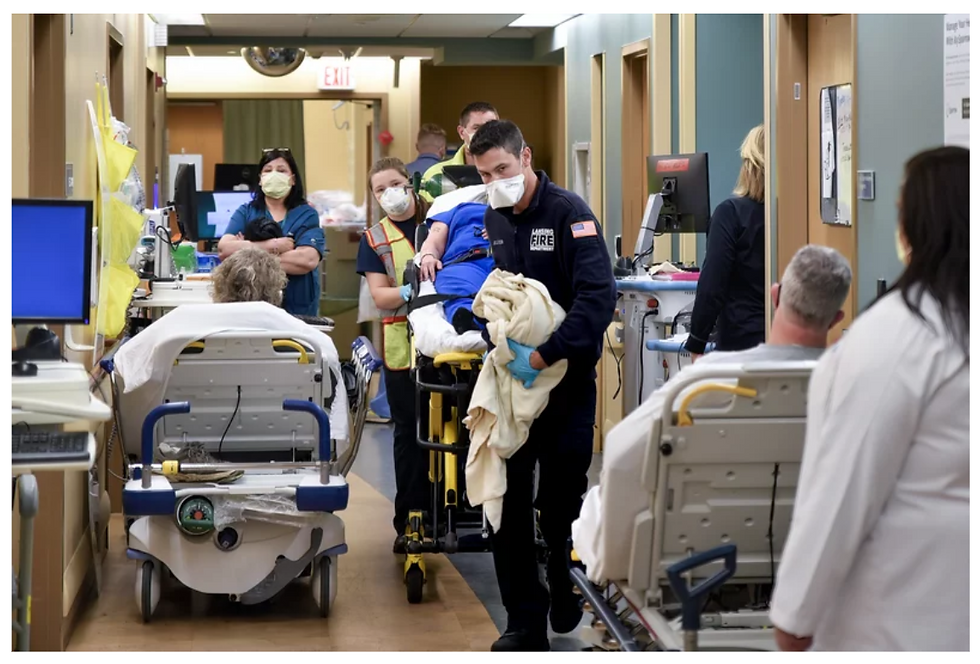Wound Expertise - A Key Competency for Utilization Management Organizations
- katherinepiette
- Jul 4, 2022
- 3 min read
By Alicia Jenkins, Director of Clinical Services

How does a WOC nurse support the goals of a post-acute Utilization Management company?
WOC nurses are vital in improving the clinical and business outcomes for Utilization Management companies. These specialists support Utilization Management companies and their post-acute provider partners to provide evidence-based, best practice wound and ostomy care, decreasing healing time, length of stay, supply costs, and overall visit utilization.
Corstrata's WOC nurses provide Utilization Management companies with an extensive, detailed plan that results in a positive ripple effect for all stakeholders, including the patient at the heart of health care, the post-acute provider, and the insurer/payer. They all benefit from wound specialist advice, recommendations, education, and referrals that produce shorter healing times and decreased risk of complications, including; infections, amputations, and rehospitalizations, as well as a decrease in the number of skilled nurse visits, length of service, and supply costs.
Wound specialists positively impact the bedside clinicians, patients and caregivers, and the patients' providers/physicians who receive the expert assessment and recommendations. The consultation provides them needed additional guidance towards wound identification with suspected etiology, disease management recommendations, nutrition for wound healing, patient/caregiver education, and referral recommendations if needed. Referrals may include, for example - Physical Therapy for gait training, transfer techniques, and offloading for the patient with a Diabetic Foot Ulcer or Pressure Injury, or for biopsy of a suspicious wound needing a definitive diagnosis for an appropriate treatment plan to be devised, or a vascular referral for ABI's, revascularization, etc.
Corstrata's certified Wound and Ostomy specialists (WOC nurses) identify a wound patient's healing potential
Healable – The wound has a good blood supply, and the underlying etiology can be addressed.
Maintenance – The wound has healing potential, but barriers exist that compromise healing. Social determinants of health, compliance, and multiple factors play a role in determining goals of care.
Non-Healable – The wound is not expected to heal because the etiology, factors that delay healing, or comorbidities cannot be adequately addressed.
Corstrata provides detailed recommendations based on best practice standards and customized to individual patient needs, whether the goal is closure or palliative, and addresses special needs, i.e., hospice or end of life and discharge and preventative recommendations when indicated.
Let's look at an example:
The patient was referred with venous ulcerations of the Lower Extremity.
The wound beds contain necrotic tissue and biofilm with epibole to the wound edges.
Current wound care consists of daily cleansing with soap and water and applying betadine moist gauze as wet to dry dressings, followed by mild compression wraps.
The patient has multiple comorbidities - diabetes, obesity, nicotine dependence, and PAD.
Corstrata Recommendations:
Treatment goals identified include wound bed preparation for removing necrotic tissue and biofilm, infection management, moisture balance promotion, and edge effect management.
New advanced wound care dressing recommendations were made to meet each of those goals and based on evidence based guidelines from cleansing to primary and secondary dressing choices.
The new wound care regimen allowed for a skilled nurse visit frequency of 2x weekly to be recommended vs. the 3x weekly to daily wound care that was currently being provided.
Additionally, disease state management recommendations were offered to address ABIs to determine safe levels of compression and identify other interventions that may be needed.
Further recommendations were provided for measures to support venous return, address identification and management of infection, and diet and lifestyle to support wound healing.
These comprehensive recommendations enabled the Utilization Management company to work with their post-acute provider partner and patient to ensure all aspects of their partners' care were being managed to promote wound healing. The result was a decrease in the length of service, fewer skilled nursing visits, and a reduced risk of infection and hospitalization - all promoting excellent outcomes.
Corstata's ROI benefits to Utilization Management companies are reduced visits, faster healing times, decreased length of stays, and decreased rehospitalizations that yield an overall lower cost of care with improved outcomes and patient satisfaction.
Contact Us to learn more about how we could collaborate and support your utilization management program.




Comments